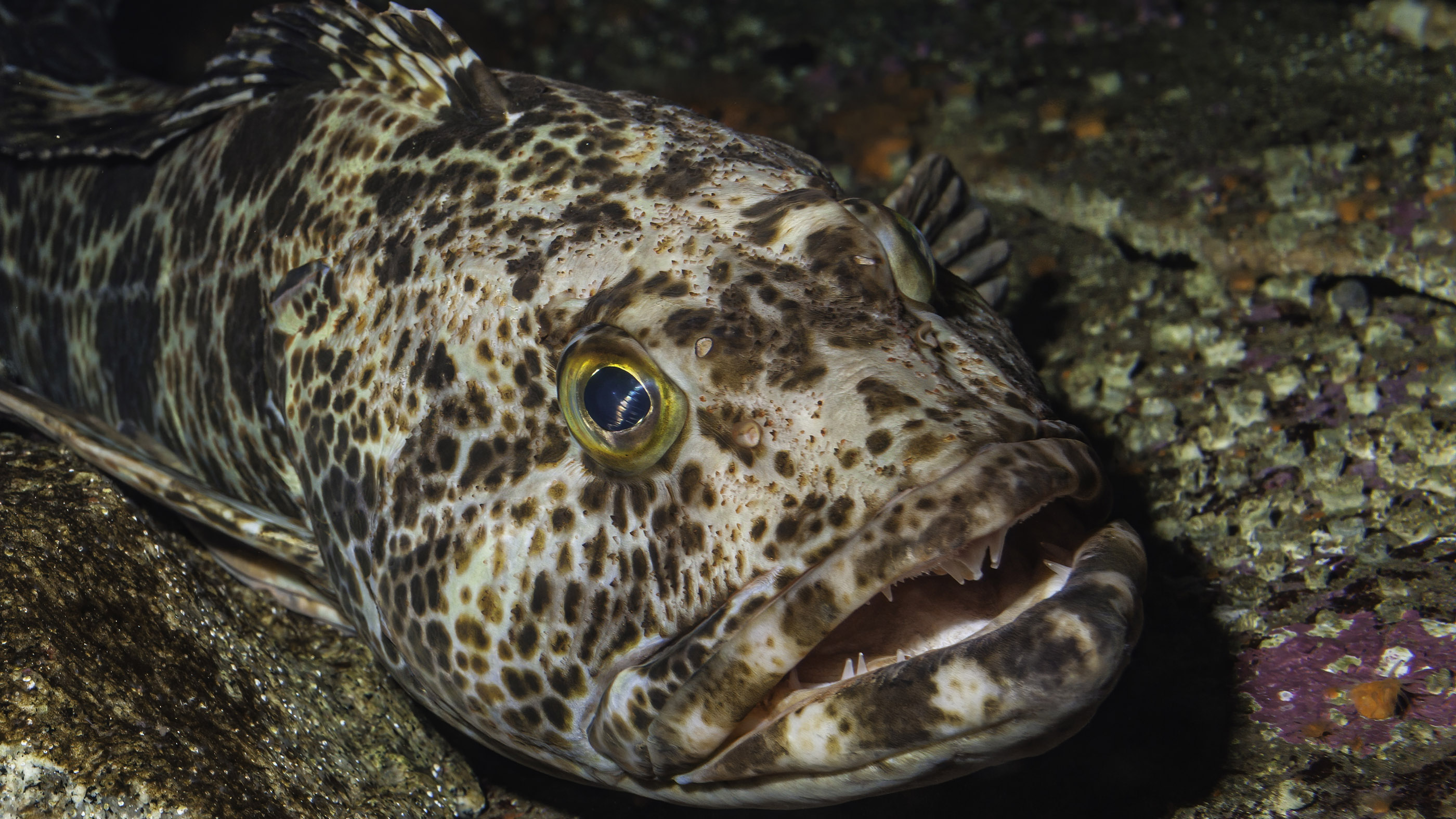This fish has 555 teeth … and it loses 20 every day
It loses a lot of teeth, but there are more where those came from.

A fish called the Pacific lingcod has one of nature's toothiest mouths, with about 555 teeth lining its two sets of jaws.
Now, a new study suggests that these fish lose teeth as fast as they grow them — at an astonishing rate of 20 per day.
"Every bony surface in their mouths are covered in teeth," said senior author Karly Cohen, a doctoral candidate in biology at the University of Washington.
Related: Fish with 'human teeth' caught in North Carolina
The Pacific lingcod (Ophiodon elongatus) is a predatory fish found in the north Pacific. It reaches a length of 20 inches (50 centimeters) at maturity, but some lingcod have reached lengths of 5 feet (1.5 meters). To understand how the Pacific lingcod's mouth looks and functions, first throw out almost everything you know about your own mouth. Instead of incisors, molars and canines, these fish have hundreds of sharp, near-microscopic teeth on their jaws. Their hard palate is also covered in hundreds of tiny dental stalactites. And behind one set of jaws lies another set of accessory jaws, called pharyngeal jaws, that the fish use to chew food much in the same way humans use molars.
As strange as this oral setup is when compared with mammalian mouths, the Pacific lingcod's mouth is relatively mundane for a bony fish, which, according to Cohen, makes it a great species to study.

For example, an organism's teeth can reveal how and what it eats. And because teeth fossilize so well, Cohen told Live Science, "they are the most abundant artifact in the fossil record" for many species. For others, their teeth might be the only record the species ever existed.
Get the world’s most fascinating discoveries delivered straight to your inbox.
Because discarded teeth are so common, it's clear that fish shed a lot of teeth. The problem, according to Cohen, was that "we really had no idea how much 'a lot' was."
Cohen and study lead author Emily Carr, an undergraduate biology student at the University of South Florida, kept 20 Pacific lingcod fish in tanks at a University of Washington laboratory in Friday Harbor. Because the Pacific lingcod's teeth are so small, figuring out how quickly these fish lose their teeth was not as simple as sweeping them from the aquarium floor. Instead, the researchers placed the lingcod in a tank filled with a dilute red dye, which stained the fish's teeth red. Later, the researchers moved the fish to a tank filled with a fluorescent green dye, which stained the teeth again.
Carr then placed the toothed bones under a microscope in a dark laboratory and calculated the ratio of tiny red teeth to tiny green teeth across all of the toothed bones in the Pacific lingcod's mouth. In total, she counted over 10,000 teeth across all 20 captive fish.
"Karly [Cohen] says she stuck me in a closet and I came out with a paper," Carr joked. For a long time, "I had to work in a dark room, looking at teeth under a microscope."
They found that the fish lose an average of roughly 20 teeth per day, Carr said.
The pharyngeal jaws, for example, seem to lose teeth much faster than do other parts of a lingcod's mouth. Cohen is excited to investigate why this happens. "In our experiment, feeding the fish didn't increase their tooth replacement, so what, if anything, does?" she said.
The researchers described their findings in a study published Oct. 13 in the journal Proceedings of the Royal Society B.
Editor's note: Updated at 10:29 a.m. EST Nov. 17 to clarify that the microscopic work was done in a dark room with a microscope.
Originally published on Live Science.

Cameron Duke is a contributing writer for Live Science who mainly covers life sciences. He also writes for New Scientist as well as MinuteEarth and Discovery's Curiosity Daily Podcast. He holds a master's degree in animal behavior from Western Carolina University and is an adjunct instructor at the University of Northern Colorado, teaching biology.
